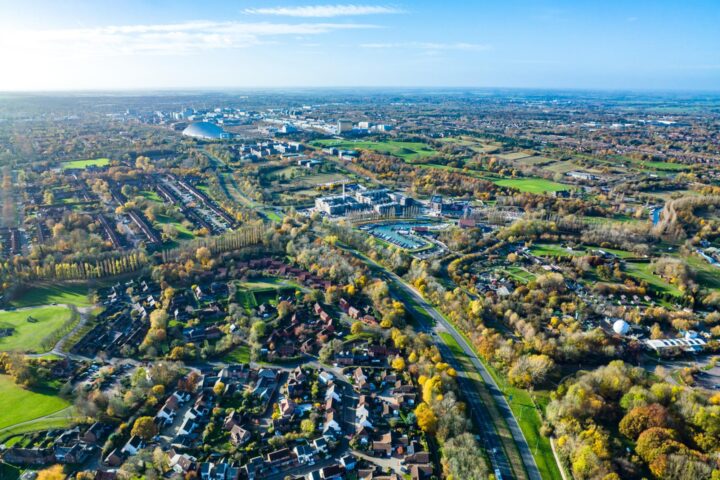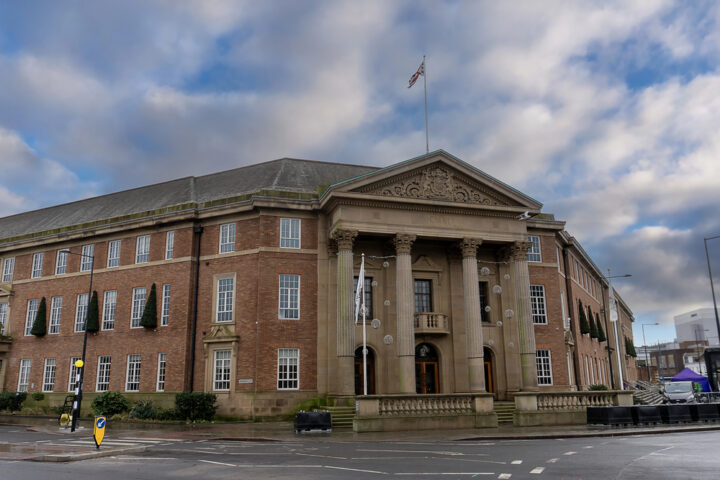The West Midlands is a hub of transformation, where industrial ambition and urban vision collide. In Warwick, construction has kicked off on a £20 million logistics unit, promising jobs and growth. Meanwhile, Birmingham grapples with a bold plan for towering buildings, sparking debate over the city’s future skyline. Together, these projects highlight a region balancing economic expansion with its evolving identity.
Warwick’s New Industrial Powerhouse
At Tournament Fields Business Park, just off Junction 15 of the M40 in Warwick, a £20 million industrial and logistics unit is taking shape. Stourbridge-based developer Barberry is behind the speculative project, tapping Bromsgrove contractor Benniman to build a 92,246 square foot Grade A facility. Named Barberry Midbox 92, it’s set to wrap up by late 2025 and is up for lease or purchase, poised to create dozens of jobs.
Barberry snagged the last prime plot at the park last year, securing planning approval from Warwick District Council. Jonathan Robinson, the firm’s development director, called it a “best in class” effort to ease the region’s shortage of top tier industrial space. “New buildings like this help local, regional, and national businesses expand their operations within the Midlands,” he said. The unit, designed with sustainability in mind, targets EPC A+ and BREEAM Excellent ratings, boasting electric vehicle chargers, solar panels, and staff welfare features like an outdoor gym.
Savills, one of the park’s agents, predicts strong demand. Director Christian Smith noted, “Barberry’s foresight to develop here, where options are scarce, will draw interest from a market hungry for quality mid box facilities along the M40 and M42 corridors.” Tournament Fields already hosts big names like Scholastic Publications, Gallagher Security, and Hansgrohe, cementing its status as a logistics hotspot with direct motorway access.
Birmingham’s Towering Ambitions on Hold
In Birmingham’s city center, a proposed redevelopment of the former Axis Building site on Holliday Street has hit a snag. The plan, a mixed use vision with five buildings, aims to turn a vacant lot into a “dynamic new destination.” It features a striking 49 storey residential tower with 868 apartments, a 39 storey residential block, a 29 storey student housing tower with 720 beds, a 10 storey apartment building, and a hotel with 229 serviced units. A public square and food hall would anchor the site, promising a “vibrant, lively atmosphere” and a “beautiful gateway” to the city.
Yet, at a recent planning meeting, concerns stalled a decision. Councillor Philip Davis raised alarms about the impact on historic buildings and the lack of a clear tall buildings policy. “We’re seeing the incremental transformation of the city into a city of tall towers without a debate,” he warned, questioning whether Birmingham should chase a New York-style skyline. Councillor Colin Green criticised the housing mix—45.6 percent one bed, 51.4 percent two bed, and just three percent three bed—arguing it doesn’t meet the city’s need for family homes.
Defending the scheme, planning committee chair Councillor Lee Marsham highlighted its housing benefits and noted Historic England’s lack of objection. Area planning manager Nick Jackson added that taller buildings maximize site use, aligning with existing guidelines on landmarks and heritage. Still, the committee deferred a decision, leaving the project’s fate uncertain as Birmingham weighs growth against its architectural soul.
A Region at a Crossroads
These stories reflect the West Midlands’ dual trajectory. Warwick’s logistics unit, part of Barberry’s broader regional push—including a £16 million warehouse in Birmingham and a £10.5 million manufacturing unit in Coventry—signals confidence in industrial demand. Its strategic M40 location and green credentials make it a magnet for businesses, echoing the area’s manufacturing legacy while addressing modern logistics needs.
Birmingham’s tower debate, meanwhile, captures a city wrestling with its urban identity. The Axis site plan promises 1,719 homes and jobs but risks overshadowing heritage and skewing housing toward smaller units. The delay reflects a broader question: should Birmingham embrace skyscrapers or preserve a distinct character? As Councillor Davis put it, the city needs a clear stance rather than an “incremental” drift.







